Urban Exploration in Paris
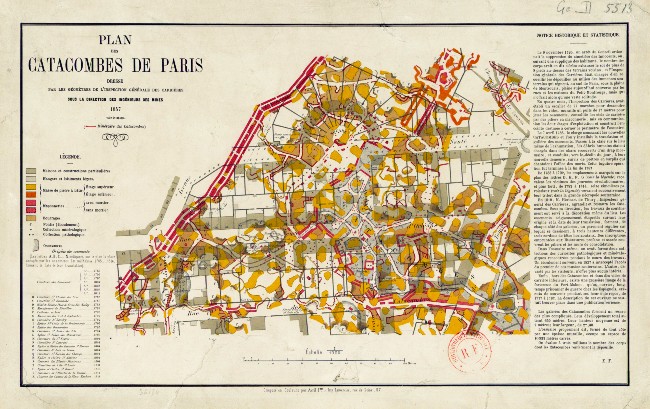
- SUBSCRIBE
- ALREADY SUBSCRIBED?
BECOME A BONJOUR PARIS MEMBER
Gain full access to our collection of over 5,000 articles and bring the City of Light into your life. Just 60 USD per year.
Find out why you should become a member here.
Sign in
Fill in your credentials below.
The physical map of contemporary Paris hides a historical one charting over two millennia of subterranean foundations, passages, and conduits. Some stealthy Parisians aim to explore these hidden or inaccessible places. Their discoveries extend to prohibited spaces such as subways, underground graves, plus rooftops and all manner of neglected mansions, abandoned schools, warehouses and hospitals. This practice of exploring places closed to the public is called Urban Exploration or UrbEx.
Urban explorers make clandestine visits to the quarries and catacombs of Paris. Viewers of the recent Netflix series Lupin, will know that the Paris catacombs carry on for miles further than the legal visits allow. But these “underground” activities can also hit the highest roofline where those with nerves of steel capture the great views and themselves at great heights.
For me, the epitome of urban exploring is revealed in the story of one group of trespassers who took it upon themselves to slink into the Panthéon to restore a centuries-old-clock that sat silent for years. Although the administration of the Panthéon was less than pleased with the break-in, the explorers wanted to restart the ticking of the clock they said represented the heart of Western civilization.
Most UrbEx is considered illegal; it’s forbidden to enter most of the spots visited. However, those curious and eager to travel back through the history of Paris can do so through these somewhat secret, yet legal, explorations.
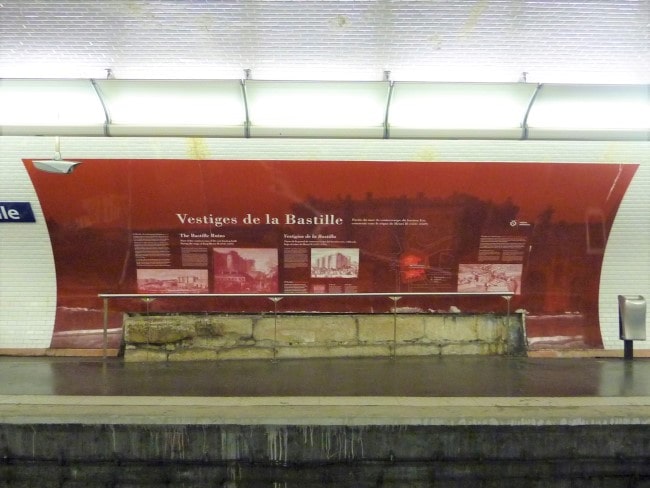
Remains of the Bastille visible at the Bastille Metro. © 石川 Shihchuan/ Wikimedia Commons
The Remains of the Bastille
In addition to the murals on the Line 1 platform of the Bastille metro station which commemorate the 200th anniversary of the French Revolution, there are also pieces of the foundation of the actual fortress. Found in 1906 when work on the metro was underway, the engineers decided to leave the archeological site in tact. The artifacts representing the eastern moat walls of the Bastille are found on the line 5 platform: direction Bobigny-Pablo Picasso.
Another piece of the Bastille is found in Square Henri-Galli at the corner of Boulevard Henri IV and Quai des Celestins. A large piece of the Bastille was unearthed in 1899, during excavations for the Paris metro and moved to this nearby square. The remains were part of one of the Bastille’s eight towers.

The Arenes de Lutèce. © Mbzt/ Wikipedia Commons
The Arènes de Lutèce
The Arènes de Lutèce was a spacious Gallo-Roman amphitheater, built between the 1st and 2nd centuries. Fittingly found in what would be known as the Latin Quarter, these ruins were discovered in 1869 when the rue Monge was being laid out. More extensive ruins were uncovered at that time only to be lost to development. This mini-Colosseum could hold more than 10,000 spectators seated in the round. The actors’ lodge remains, as well as the stage platform and other stone embellishments. Restoration of the arena took place in 1918 and is now classified as a historical monument. This amphitheater can be visited free of charge during the day and accessed via 4 rue des Arènes in the 5th arrondissement.
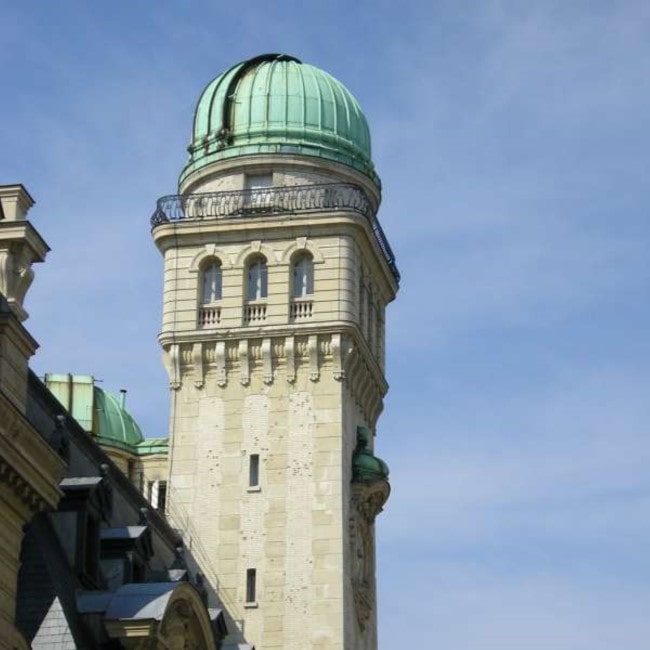
The Sorbonne’s Observatory. © François Trazzi/ Wikipedia Commons
The Sorbonne Observatory
Two evenings a week the Sorbonne Observatory is open to the public. On Mondays and Fridays, the French Astronomical Society (Société astronomique de France) organizes a group of up to five interested people to join them on the climb to the observatory’s wooden dome. Founded in 1885, students eager to see the stars have been clambering up the same 100+ stairs since the 19th century. All the observatory equipment, dating back to the 1930s, is in perfect working order, yet light pollution from the city sometimes obscures the planets. However, from the balcony surrounding the observatory, there is an unobstructed 360º view over Paris. There can be a wait of several months which adds a cachet to the event. Bookings can be made here.

Basilique du Sacré-Cœur by Sarah Viehbeck
Dome of Sacré Coeur Basilica
To reach the dome of Sacré Coeur, a steep and winding climb up the 300 steps must first be undertaken. But at 83 meters, the climb is rewarded with stunning views of Paris. The dome is one of the tallest observation points in the city after the Montparnasse Touwer and the Eiffel Tower. The detail of the beautiful white stone domes at Sacré Coeur rival the views. Access to the dome is to the left of the basilica’s main entrance, where you’ll have to purchase a ticket and pass security. More info here.

Hôtel-Dieu Gardens. © Wikimedia Commons
The Hôtel-Dieu
Parts of the Hôtel-Dieu on the Île de la Cité are no longer in use. In the central courtyard of this ancient hospital, calming neoclassical colonnades line a parterre of garden beds. The long corridors are hauntingly elegant, while other corners demonstrate an urban decay. It’s the oldest hospital in Paris, a version of which has been on this site since 651. Part of the building is a working hospital, so quiet is required. The Hôtel-Dieu is located off the Parvis de Notre Dame. You can walk right in; a security guard will check your bag and give you directions to the courtyard.
Also found on this square is the Crypt of Notre Dame de Paris.

La crypte archéologique du Parvis de Notre Dame (Paris). © Jean-Pierre Dalbéra/ Wikipedia Commons
The Crypt de Notre-Dame de Paris
The crypt of Notre-Dame has been one of Paris’s hidden jewels since it opened to the public in 1980 and provides a unique view of the architectural development of the Île de la Cité. Located under the square fronting Notre Dame Cathedral, its 1800sq m makes it the largest crypt in Europe. The crypt displays archaeological remains discovered during excavations from 1965 to 1972 and traces history from the ancient times to the 20th century. Remains of the quay of the ancient port of Lutetia are on display, as is a Gallo-Roman bath-house, a 4th-century city wall, and the basement of the nearby Hôtel-Dieu. Traces of Haussmann’s sewers are included too.
Before the crypt could reopen, lead dust from the fire at the adjacent Notre-Dame was removed, ancient stones cleaned, ventilation systems vacuumed

Museum of Relief Maps (Musée des Plans-Reliefs)
The Musée des Plan-Reliefs
On the fourth floor of Les Invalides compound is a map room – with not just any maps but a unique collection of 3D reliefs. These masterpieces of miniaturization are 1/600 scale models of significant French cities from the 17th to 19th centuries. It’s possible to see an aerial view of Mont-Saint-Michel at the time of the Sun King or the battlements of Bayonne in the 19th century. Fascinatingly detailed, these reliefs were built as military planning tools situating fortifications in their surrounding terrain. As an added bonus, heads of state could see the domains they commanded at a single glance. The museum displays 28 plans-reliefs and also presents information on their construction and use. More info here.
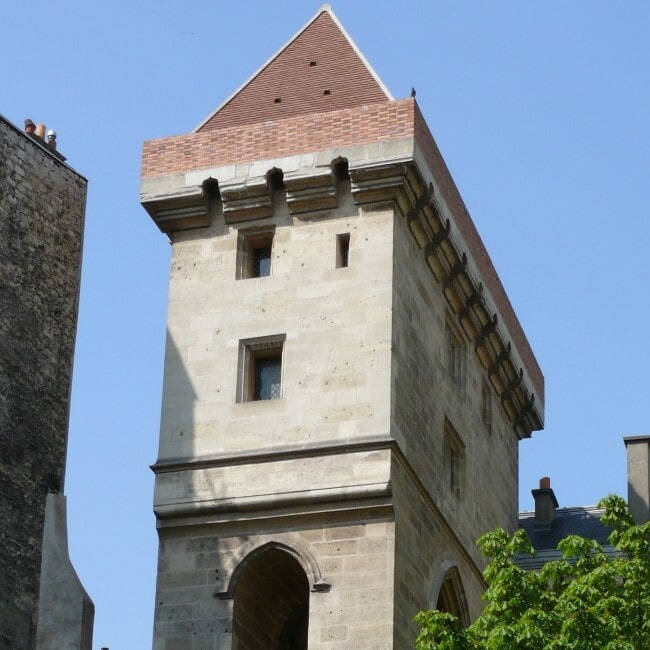
The Tour Jean Sans Peur. Wikipedia Commons
Tour de Jean Sans Peur
Found in the courtyard of a public school is a medieval tower, worthy of fairy-tale Rapunzel. Juxtapositioned against Haussmann-era buildings, this tower is one of the best surviving examples of medieval residential architecture in Paris. It was the home of Jean the Fearless and the Tour de Jean Sans Peur has been on this spot since 1411. The tower is the only remaining vestige of the Hôtel de Bourgogne, first belonging to the Counts of Artois and then the Dukes of Burgundy of which Jean Sans Peur was one. He earned the moniker “fearless” after the Turks captured him in 1396. This historical monument is open to the public to see the spiral staircase with its magnificent sculpted reliefs of oaks, hops, and hawthorn. Also displayed are exhibits on daily medieval life. There are guided tours and games to keep the children’s’ interest. It’s located at 20 Rue Étienne Marcel in the 2nd. More info here.
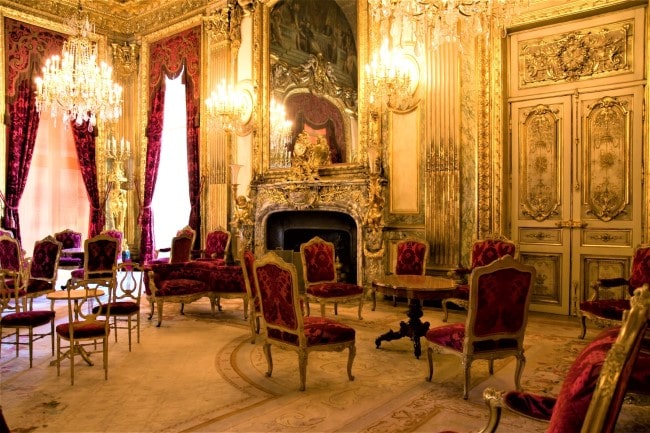
Appartements Napoléon III at the Louvre. © Wikipedia Commons
The Louvre Less Traveled
There are not-so-secret royal apartments at the Louvre. Before the whole palace became a museum, kings, emperors, ministers and courtiers wandered the maze of the Louvre’s galleries. Almost completely intact are the historical apartments of Emperor Napoleon III. Used as reception rooms for Napoleon III’s Minister of State circa 1851-1870, the sumptuous state apartments drip with red velvet, brocade and impressive crystal chandeliers. Puttis and caryatids enjoy themselves in a gilded bacchanalia. Part of the admission to the Louvre, these apartments are a spectacular example of decorative art during the Second Empire. They are found in the Richelieu Wing, Level One, beginning with room 544. They aren’t secret but much quieter than the rest of the museum. More info here.

Walls of the castle preserved in the Medieval Louvre
Also included in a ticket to the Louvre is access to the buildings original foundations. Located beneath the museum’s Coeur Carré, the ruins of the original 1190 fortress built during the reign of King Philippe Auguste can be explored. The original building survived until the early 16th century, when the keep was torn down to make way for the Renaissance palace that we know today as the Musée du Louvre.
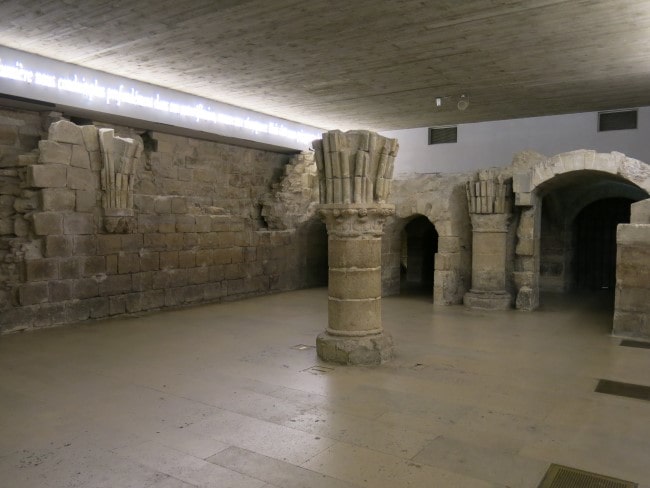
The Salle Saint Louis in the Louvre.
Archaeological excavations in the mid-1980s made the ancient foundations visible as well as remnants of a moat and dungeons. Parts of Salle Saint-Louis, built between 1230 and 1240, remain, the only evidence of the castle’s main building. Along with the foundations, the “Medieval Louvre” exhibit is a comprehensive look at the building’s history and is found in the basement of the museum’s Sully Wing.
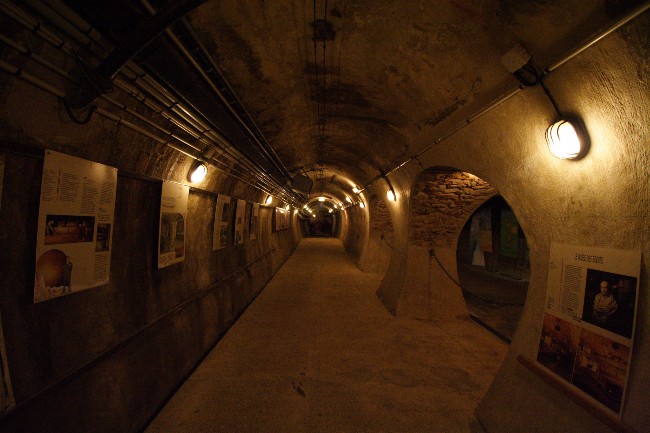
Musée des Égouts de Paris (The Sewers Museum). Credit: ignis/ Wikimedia Commons
The Sewers of Paris
Since the reign of Philippe Auguste in the early 13th century, Paris’s sewers have been draining the city’s wastewater, when the first were drains built. Thankfully, covered sewers were introduced during Napoleon’s time. Here in the underbelly of Paris, beneath the Pont de l’Alma, a section of the sewers remains open to visitors and tours offer the chance to explore the tunnels, and learn about the engineering marvel at the adjoining Paris Sewer Museum- Musée Egouts. Today’s innovative network of more than 2,100 km of sewer tunnels began in 1850, the masterwork of engineer Eugène Belgrand. These vast underground caverns understandably mirror the streets above and serve not only as waste water channels, but as a conduit for telecommunications networks. The Paris sewers have been a fashionable tourist attraction since the 19th century when Victor Hugo made them the hideout of Jean Valjean. Up until the 1970s boat and wagon rides would wend visitors on a tour of the city’s murky and mucky underworld. The museum has reopened after recent renovations. More info here.
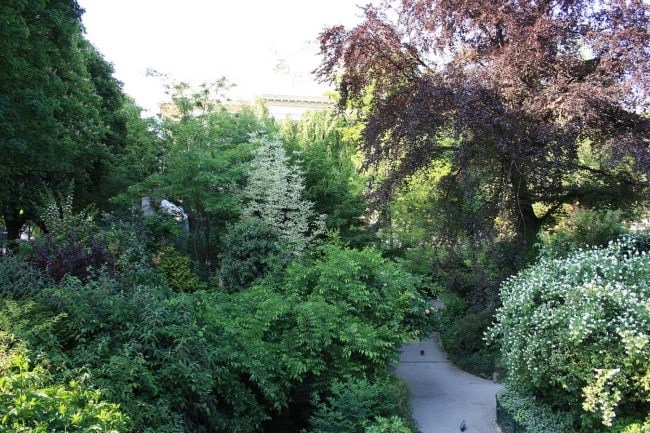
Jardin de la Vallée Suisse. Credit: Lionel Allorge/ Wikipedia Commons
The Jardin de la Vallée Suisse
La Vallée Suisse is a true hidden garden in Paris. To the right, or the south, of a memorial to Alfred de Musset on Avenue Franklin D. Roosevelt, at the corner of Cour de la Reine, there is an alluring little green gate. Steps descend into a chasm of green where mature trees, dripping beeches, shrubs, and perennials cover faux bois steps, stone arches, and grottos constructed out of concrete. There’s a footbridge, a carp pond and a waterfall that obscures the din of Right Bank traffic.
The design of the park is credited to 19th-century engineer Jean-Charles Adolphe Alphand who created the oasis in preparation for the 1900 World’s Fair and named it La Vallée Suisse. This carefully constructed illusion of wilderness was meant to be temporary, but the gardens and its constructions have lasted for over well over 120 years. As an aside, the Eiffel Tower was another structure meant to be impermanent. The garden received another inexplicable name in the 1970s, La Jardin de la Nouvelle France.
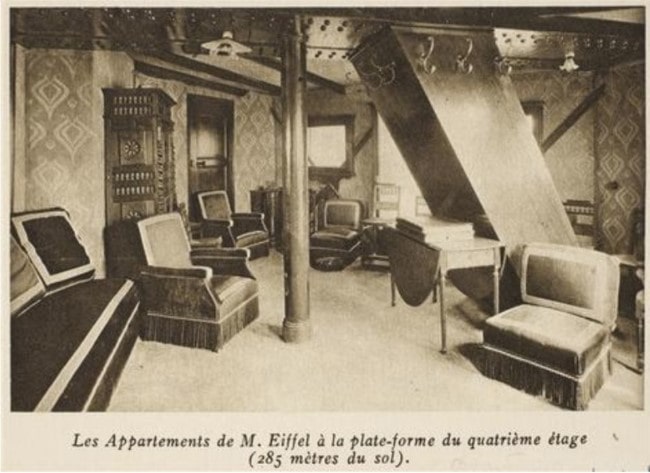
Eiffel’s appartment
Eiffel’s Secret Apartment
When Gustave Eiffel designed the tower that would bear his name, he included a special, secret apartment located at the top, just below its spire. Designed without a bedroom, this pied-à-terre was primarily planned to attract notable guests. Restored to its original condition, the apartment is now available for the public to tour, where life-like models depict the scene of Eiffel and his daughter welcoming the American inventor Thomas Edison. Completely surrounded by an open air balcony, this dwelling measured approximately 100 square meters, though a large portion was occupied by the elevator cabin. Edison intimated that it was enough space for a party of more than 75 people. Unlike the marvel of steel and rivets he designed, Eiffel’s party-lounge was a warm and cozy place with the best vantage in town. More info here.
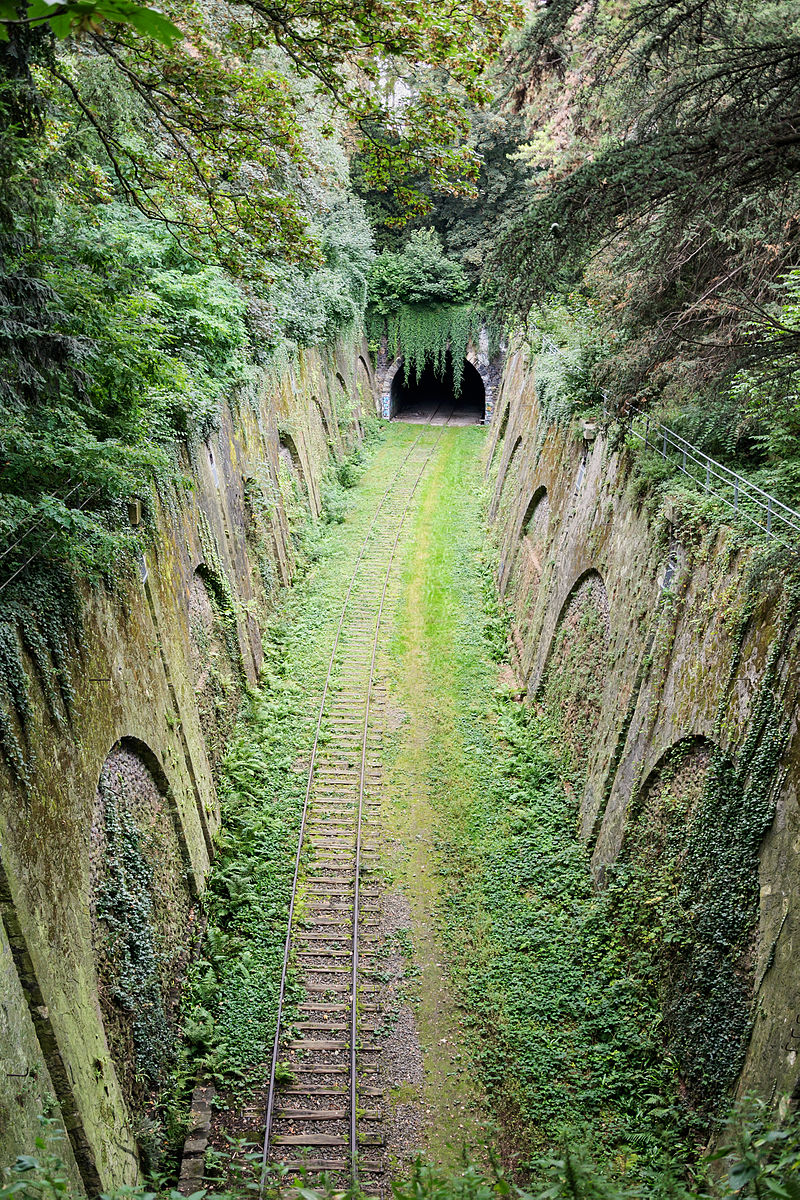
The Petite Ceinture where it traverses Montsouris. Credit: Myrabella/Wikimedia Commons
Petite Ceinture
This “little belt” is a former railway line which ran around Paris from 1852-34 carrying people on steam locomotive. This walking path is detailed in Pat Hallam’s recent article in Bonjour Paris, “Discover the Petite Ceinture, the forgotten railway in Paris.”
Today, La Petite Ceinture offers a hidden side of Paris. Sections are open to the public, with playgrounds and communal gardens; the greenery is in stark contrast with the abundance of graffiti. The trail is a bit of investment in time. At points the track is overgrown and the tunnels are dark and long and an understandable home for rodents. Bars have opened in the old stations that dotted the route – like Le Poincoin in the 14th, the Brasserie Auteuil in the 16th arrondissement, La Recyclerie and the Hasard Ludique in the 18th. The line is accessible from many of Paris’ arrondissements. Rumor is that the Paris Catacombs can be accessed in one of the tunnels. Don’t do it. The official Paris tourism website will offer more details on how to reach the rails.
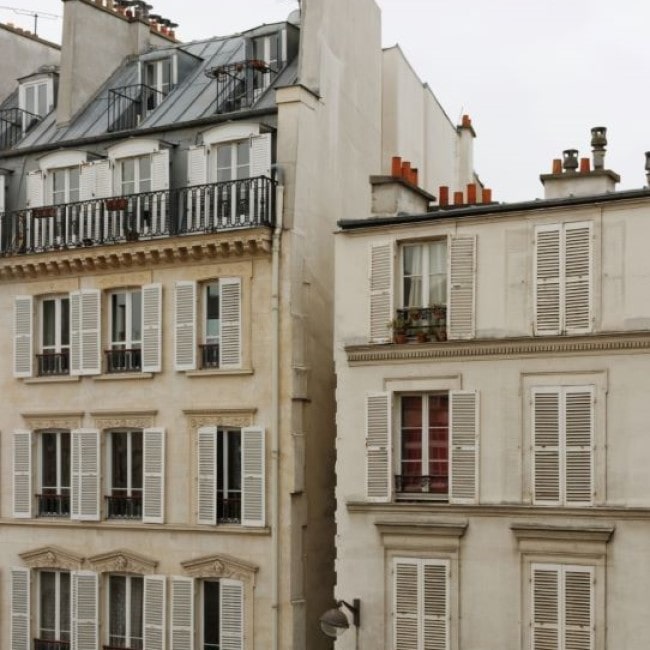
39 rue Chateau d’Eau, the thinnest house in Paris
The thinnest house
At No. 39 rue du Château d’Eau, in the 10th arrondissement, is the thinnest house in Paris. Wedged between two buildings, it measures just 1.10 meters wide – the width of a mattress. The house was built as a tactic to stop a passage being built to the nearby Rue du Faubourg Saint-Martin. Back in 1897 a shoemaker inhabited it. Today its tenant still has to contend with a floor plan of just 3 square meters. 11 Quai Voltaire is another very narrow house. With its Art Nouveau façade it’s more Instagrammable, but not quite as thin.
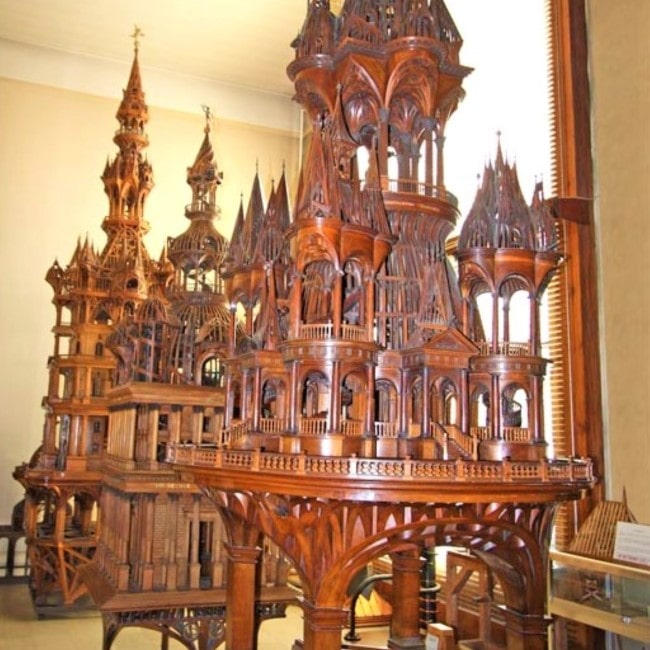
courtesy of Musée – Librarie du Compagnonnage
Musée – Librarie du Compagnonnage
To see inside ancient Paris buildings without breaking any laws perhaps a visit to the Musée – Librairie du Compagnonnage is in order. This is a museum devoted to French trade guilds which includes carpenters, roofers, cabinet makers, builders and stone masons. Through an inauspicious door at 10 rue Mabillon, across from Marché Saint-Germain, this museum features masterworks by these trades from their medieval origins to the present day and includes scale models of building frames, spiral staircases, pulpits and spires. Entry is free. More info here.
Lead photo credit : Plan of the visitable Catacombes, drawn by the IGC (Inspection Générale des Carrières) in 1858. Public domain.
More in explore, history, history in Paris, Museum




REPLY